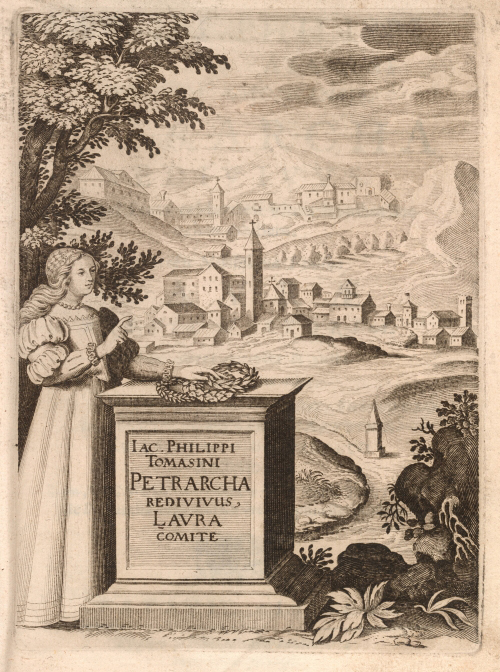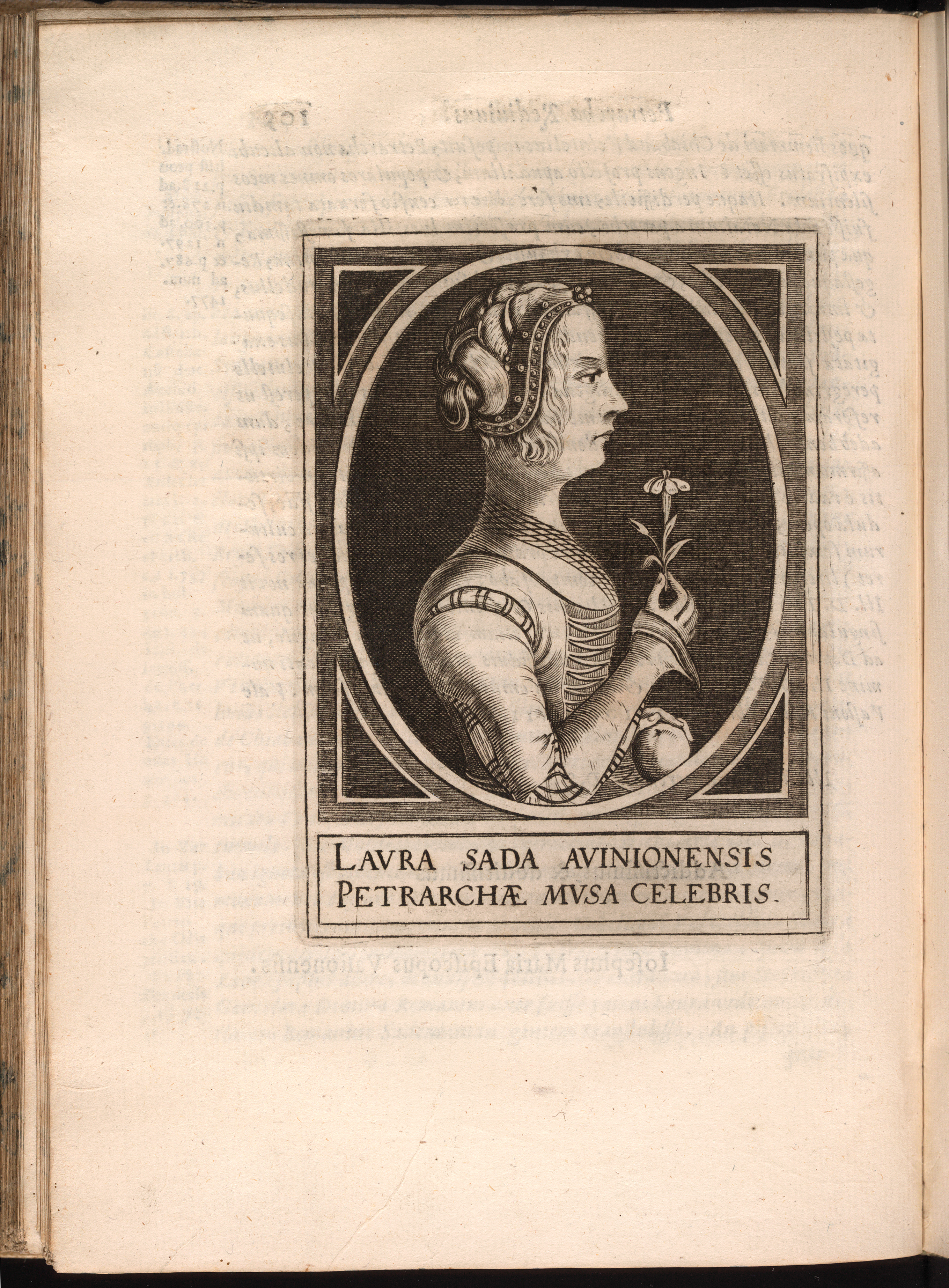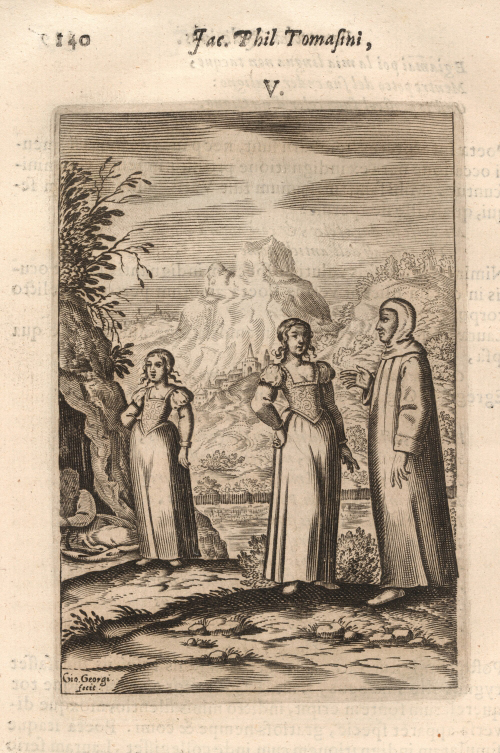Jérôme David and Giovanni Georgi made the engravings for this heavily-illustrated mid seventeenth-century book. The frontispiece (fig. 1) features an illustration of Laura in the Vaucluse. The first page (fig. 2) has a portrait of Laura Sada, or Laura de Noves (1308?-1348). Laura was an ancestor of the Marquis de Sade (1740-1814), whose family were related to the royal house of Condé. The Marquis was well aware of his "Lauresque" ancestry, and in a chilling inversion of her symbolism, related a dream in a letter to his wife:
"Laura Sada", or Laure de Noves, was the wife of the Provengal noble Hughes de Sades, and ancestress of both Petrarch's 18th century biographer, the Abbi Jacques-François-Paul-Aldonce de Sade (1705-1778), and his nephew, the marquis Jacques-François-Paul-Aldonce de Sade. In the Petrarcha redivivus, Tomasini refers the legend of Laure de Sade's identity with Petrarch's Laura. Laura, as Petrarch replied to Giacomo Colonna (Familiares II, 9), is absolutely real:
Laura indeed exists: she is the truth Petrarch seeks, desires. She is the name for Petrarch's epiphany of April 6, 1327 (not Good Friday, but the historic anniversary of the crucifixion) in the church of in Saint Claire in Avignon. He was likely inspired more by the name Laure than he was by the namebearer herself: "she" already prefigured in the poetry of the Provengal troubadors. It comes as no surprise that the "Aura" (the "breeze" in Latin, exactly synonymous with anima, alma, spiritus, as well as the Greek Psyche) dies on the same date in 1348. In that year, when the great plague struck, as the 100 Years War raged on, as Petrarch's political hopes for Rome were violently dashed, his world was inexplicably dying, self-destructing. The reality and the validity of Laura is literary, epistemological, moral (or the question of morality), and psychological. Mind, psyche, soul: limbs of the Laura whose absolute human reality Petrarch could never sufficiently underscore.
|
Page 140 (fig. 3) and 141 (fig. 4) from Tomasini's work illustrate sections of Petrarch's first canzone, the allegoric "Nel dolce tempo de la prima etade" (RVF 23 In the sweet season of our spring), also known as "Petrarch's Metamorphoses." Petrarch, as the anonymous narrator, is attacked by Amor, the god of Love, in a series of mythic transformations. The narrator "sings" of his woes perché cantando il duol si disacerba (verse 4, "Because song removes all bitterness from pain"), as he finds himself, for Laura, changed from a youth into a laurel (Daphne), a swan (Cycnis), stone (Battus), a spring beneath a beech (Byblis), into an echo, and finally a stag "chased by fierce dogs" (as Actaeon). The image on page 140 (fig. 3), shows Petrarch and Laura in various stances along the banks of the Sorgue, ("not the Peneus, but by a yet haughtier river", verse 48). Petrarch has just woken from a sleep, astonished to see the miracle of Laura: "Alas, what am or was I, that I must laud her as the day lauds the night, as life its end." (verses 30-31). This illustrates verses 138-139: "mi volse in dura selce; et così scossa | voce rimasi de l'antiche some" ("and turning my body to solid flint, I remained but a voice shook free from its ancient form"). On page 141 (fig. 4), Laura removes Petrarch's heart, as in verses 72-75: "Questa che col mirar gli animi fura,
m'aperse il petto, e 'l cor prese con mano, dicendo a me: Di ciò non far parola. Poi la rividi in altro habito sola," ("She who robs souls with but her gaze
opened my breast, removed my heart by hand, and warned me in verse: Say not a word of this. Then I saw her, alone, in different guise ...") |



